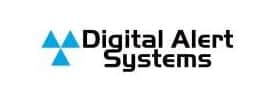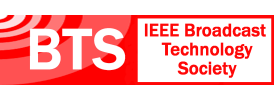- About
- Members
- Sponsors
- Subcommittees
- Technical Documents
- News
- Events
- Spotlight ATSC 3.0
- Contact Us
- Member Login
- Member Meetings
- Advanced Search
Search Site
Member Links
- About
- Members
- Sponsors
- Subcommittees
- Technical Documents
- News
- Events
- Spotlight ATSC 3.0
- Contact Us
- Member Login
- Member Meetings
- Advanced Search
President’s Memo
Posted on March 5, 2014 in ATSC News
March 2104
As we head into a very busy spring at the ATSC, this is the perfect time to highlight some of the many opportunities to get involved in our important work that’s defining the future of broadcast television.
Since the ATSC’s inception in 1983, our success has been resulted from the active participation of thousands of talented volunteers who each contribute in their own way to the development and implementation of ATSC standards. The same holds true today, perhaps with even more opportunities to get involved.
At the risk of sounding overly dramatic, similar to the early days of HDTV and digital television, the stakes are huge. Consider the new ATSC 3.0 Standard. With its new levels of performance, flexibility and evolvability, it is expected to give broadcasters the tools they need to enhance current business models and pursue new ones that will make them more competitive and profitable than ever before.
And that’s where you come in. Technical Group 3, known as TG3, is hard at work on ATSC 3.0 and defining the most sweeping technological sea changes in a generation.
Harry Jessell, editor of TV NewsCheck, said it best in a recent column, emphasizing that “what’s needed is more involvement by broadcasters” in ATSC:
“ATSC has some involved broadcasters, but it needs more. Every top 15 station group should have at least one transmission expert actively working on ATSC 3.0. If they cannot hire one, they should find a consultant. That’s the best way to insure that the standard that finally emerges in 2016 will jibe with their business strategy and give them a fighting chance.”
This issue of THE STANDARD includes an organization chart that shows TG3’s structure and the many areas for member involvement. There are four Specialist Groups: S31, System Requirements & Program Management; S32, Physical Layer; S33, Management & Protocols; and S34, Applications & Presentation Layer. Under each Specialist Group are a number of Ad-Hoc Groups, each working on critical elements of the standard.
If you’re an audio whiz or video expert, whether your expertise is in RF technology, advanced codecs, interactive services, to name a few, you’ll find the ATSC 3.0 work challenging and rewarding. I can speak first-hand about how personally gratifying it is to play a role in standards development. And large and small companies alike find that they benefit immensely from being part of the process.
As the adage goes, you’re either at the table or you’re on the menu!
***
Please join me in congratulating LIN Media’s Brett Jenkins on his return to the ATSC Board of Directors. Brett brings extensive experience and enthusiasm to the ATSC as he fills the vacant board seat resulting from the retirement of PBS’s Jim Kutzner last month, a term that runs through December 2015.
Mark Richer
President
Advanced Television Systems Committee
Posted in ATSC News
News Categories
News Archives
Subscribe
Subscribe to The Standard, our monthly newsletter. Learn More
Join ATSC
ATSC is a membership organization with both voting and observer categories. Voting members include corporations, nonprofit organizations, and government entities, and they participate actively in the work of ATSC. Observers are individuals or entities not eligible to be a voting member.
Subscribe to our Newsletter
Subscribe to The Standard, our monthly newsletter, to stay up-to-date with ATSC news and events around the world.
Site Links
Contact Us
Advanced Television Systems Committee, Inc.
1300 I Street NW, Suite 400E
Washington, DC 20005
Do you have questions about ATSC?
About ATSC
The Advanced Television Systems Committee, Inc., is an international, non-profit organization developing voluntary standards and recommended practices for digital terrestrial broadcasting. ATSC member organizations represent the broadcast, broadcast equipment, motion picture, consumer electronics, computer, cable, satellite, and semiconductor industries. ATSC also develops digital terrestrial broadcasting implementation strategies and supports educational activities on ATSC standards.
© 2025 ATSC




































